“…Children [are] the most important audience
that a writer could hope to reach …”
 October 11th, 2012 by jules
October 11th, 2012 by jules
They sat under the tree. And they began to talk.
What do you think they said?”(Click to enlarge spread)
Last week at the Kirkus Book Blog Network, I chatted with picture book author Lauren Thompson about her latest book, The Forgiveness Garden, which will be released later this month from Feiwel & Friends and which was illustrated by Christy Hale. You can see that Q & A here.
What I didn’t have room for over there last week were a few additional questions I had asked her about writing picture books in general, as well as one more particular question about this latest picture book. Below are those questions and responses, as well as some of Christy’s spreads from the book.
Enjoy.
Jules: My daughters and I have enjoyed so many of your books over the years. What do you love about writing picture books? Why write them (which I’m glad you do) and not, say, adult fiction?
and she fell hard to the ground.”(Click to enlarge spread)
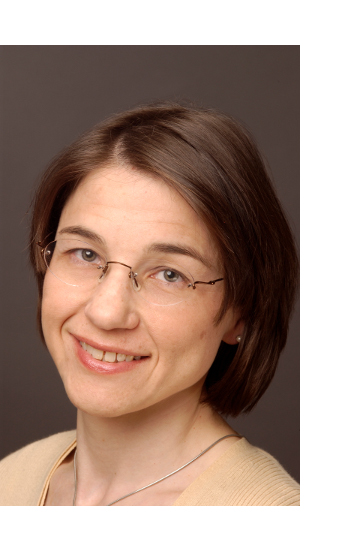 Lauren (pictured left): Thank you so much for being a fan. What I love about writing picture books is that my primary audience is young children, who are dear to my heart. I find I can really connect with young kids – that three-to-five-year-old-ish child is very much alive within me. I enjoy the challenge of touching on the most important things (in their world) with only a few words. And, since young children read images much more fluently than words, I love that my words are accompanied by images that “say” what I’ve left unsaid. And I’ve been fortunate to be paired with some extremely talented illustrators.
Lauren (pictured left): Thank you so much for being a fan. What I love about writing picture books is that my primary audience is young children, who are dear to my heart. I find I can really connect with young kids – that three-to-five-year-old-ish child is very much alive within me. I enjoy the challenge of touching on the most important things (in their world) with only a few words. And, since young children read images much more fluently than words, I love that my words are accompanied by images that “say” what I’ve left unsaid. And I’ve been fortunate to be paired with some extremely talented illustrators.
As for “why not adult fiction,” well, I tried that. Back when I was a student taking creative writing electives, we all assumed that to be a writer meant to be a writer for adults. Turns out my most successful stories were about children or teens. It wasn’t until I found a job as an editorial assistant with a children’s book publisher (adult publishers weren’t interested in hiring me) that it really sank in that writing could also mean writing for children. And it became clear to me that children were the most important audience that a writer could hope to reach. If children don’t have good books to love from an early age, how will they grow up to love books as adults?
Jules: Have you had a chance yet to share The Forgiveness Garden with child readers? If so, what’s been their response?
Lauren: I’ve shared the book with a few children. They were absorbed by the story and the illustrations. When asked what they thought the two main characters might say to each other, they were quiet for a moment. Then they said they thought the two characters would agree that both villages should stop fighting each other.
Their faces were like hers had been, hardened with anger and fear and hate.”(Click to enlarge spread)
But they acknowledged that it would be hard for the characters to say “I’m sorry.” That’s honest.
After reading the book with one girl, I was happy when she ran up to her mom and said, “Mom, it was really good!” Unsolicited praise from a seven year old — priceless.
They added stones of their own. Only Karune hung back, scared, angry.”(Click to enlarge spread)
stepped forward. ‘I will join you,’ he said to Sama.”(Click to enlarge spread)
Jules: I know this must sound cliché and you’ve probably been asked this a lot, but you’ve had such success in this field that I wonder: What would be your best advice to aspiring picture book authors?
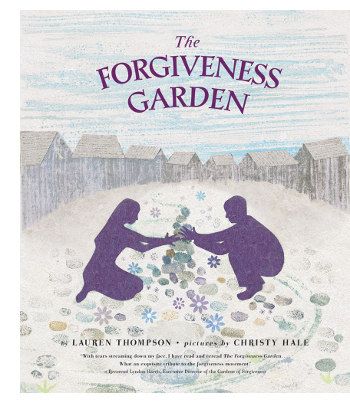 Lauren: That’s a good question that’s getting harder to answer.
Lauren: That’s a good question that’s getting harder to answer.
When I first started working in the field, some 20 years ago, picture books were booming. The market was very strong — the general public was buying lots of picture books. Now, the strongest part of the children’s book market is middle grade and YA, so publishers are acquiring fewer picture book manuscripts. It’s harder to get your first (or second or third, or thirteenth) picture book published.
Thus, my first piece of advice is: Be aware of the realities of the marketplace and don’t take rejection personally. (Also, don’t quit your day job just yet.)
My second piece of advice is, ignore the realities of the marketplace. Please don’t write another pink princess book just because pink princess books seem to be popular. Listen to that instinctual inner voice and write the stories that you need to write. And have fun with it. If out of that you write a pink princess book, well then, more power to you!
Finally, just keep writing. Try not to get tied to your one picture book manuscript that you want to get perfect. Imagine that one day you’ll have a file drawer full of manuscripts. Explore lots of ideas and voices, and let the writing river flow. It will take you places you never planned on.
Jules: What’s next for you?
Lauren: As always, I have a number of projects sprouting and growing in my creative garden. (Many will probably turn out to be weeds, but that’s okay. Over time, I may be able to develop one of those weeds into a lovely cultivar.)
I have a number of picture book ideas that I keep nurturing, some in the more poetic line of books like The Christmas Magic and Polar Bear Night. (By the way, the companion to the latter, Polar Bear Morning, is due out in January – I’m very excited.) And others are more of the character-based variety, like Little Quack.
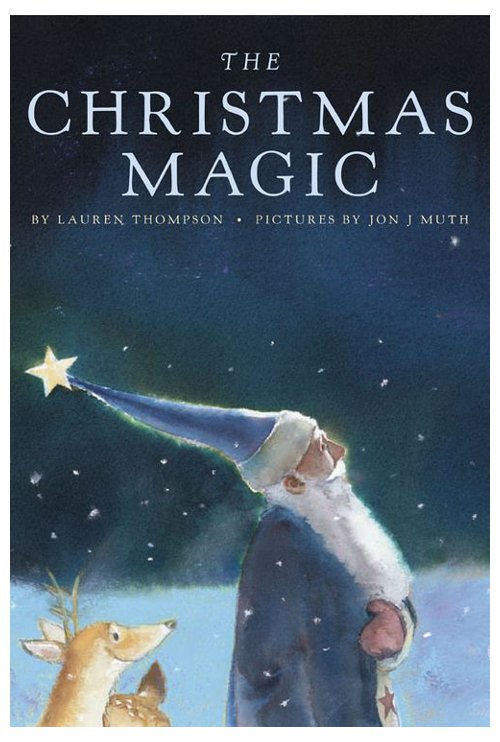

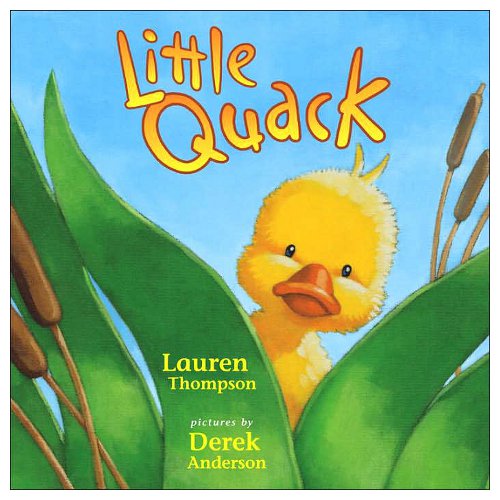
I’m interested in writing even younger, and also feeling drawn to write for older kids. I seem to be writing more and more dialogue, middle-grade style. Recently I finished the first draft of a novel-like book, which felt like a great accomplishment. It took a year and a half. Right now, it’s resting. I can see that it needs a lot of work. Meanwhile, I’m doing research for another novel-like idea I’ve had.
Looking at this answer, I wonder, how do I ever get any real, literal gardening done? Oh yeah — I don’t. Oh well.
Thanks so much for asking me to chat!
THE FORGIVENESS GARDEN. Copyright © 2012 by Lauren Thompson. Illustrations copyright © 2012 by Christy Hale. Published by Feiwel and Friends, New York. Spreads reproduced by permission of the publisher.
Author photo courtesy of JuAnne Ng.
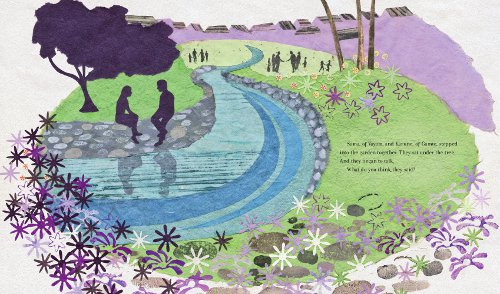
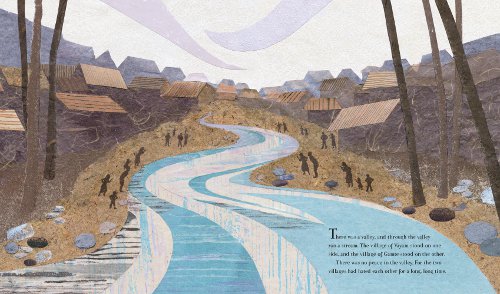

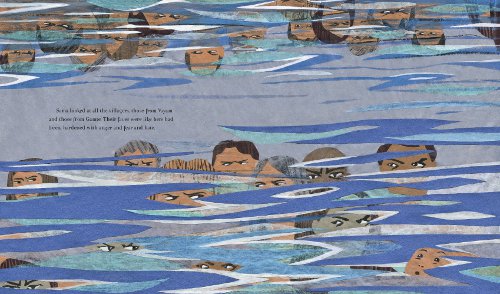
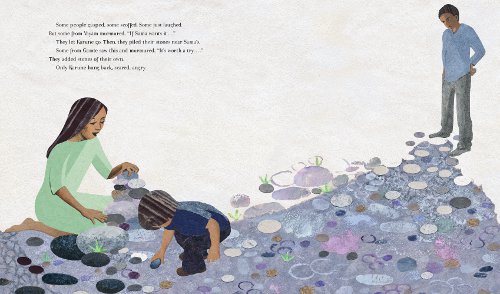
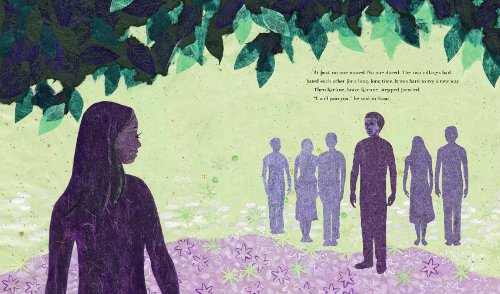

“If children don’t have good books to love at an early age, how will they grow up to love books as adults?”– What a perfect sentiment. Lauren’s new book is beautiful. I’m especially drawn to the faces reflecting in the water spread. Kudos to Christy Hale for her lovely illustrations.
Thanks for the honesty about the picture book market AND the good advice to try anyway. The youngest readers/lookers are often the most discerning, unaware of and unswayed by trends. Christy Hale’s illustrations are phenomenal. This must have been a hard book to illustrate. All the characters must be both universal and, in the cases of Karune and Sama, individual and sympathetic. Just by squinting at her compositions, the story of separation and subsequent connection emerges. Her palette is so delicate but evolves from cold, to angry, to warm and filled with hope. A lovely book!
I am now stuck with “We are the World” in my head because of reading this. (Remember, it starts “I believe the children are our future . . . “). It could be worse, however, and I thoroughly enjoyed seeing the spreads from Lauren’s new book and reading her thoughts on the market, and on the importance of writing for children.
While I have no plans to write a children’s book myself, I really enjoy hearing authors offer advice on writing picture books to other authors. I am fascinated by the process of writing children’s books and that question often reveals something interesting about an author’s thought process, like this from Lauren: “Try not to get tied to your one picture book manuscript that you want to get perfect. Imagine that one day you’ll have a file drawer full of manuscripts. Explore lots of ideas and voices.”
[…] Author Lauren Thompson (October 11, 2012): […]
[…] interview at the 7-Imp salon. His timing is good, given that he has a new illustrated title out. Lauren Thompson’s Polar Bear Morning was just released by Scholastic this month, and it’s the follow-up to […]
[…] The beauty and universality of the story is enhanced by Christy Hale’s palette of earthy and pastel colours and her textured and tissue-paper collages, with people both individualised and represented by silhouettes. As author Lauren Thompson points out in Julie Danielson’s insightful interview, ‘the trees in the first spreads of the book are leafless. Toward the end, everything is blooming’ – and you can read a continuation of this interview with spreads from the book here. […]
[…] The Forgiveness Garden by Lauren Thompson (Fiewel & Friends, 2012) […]